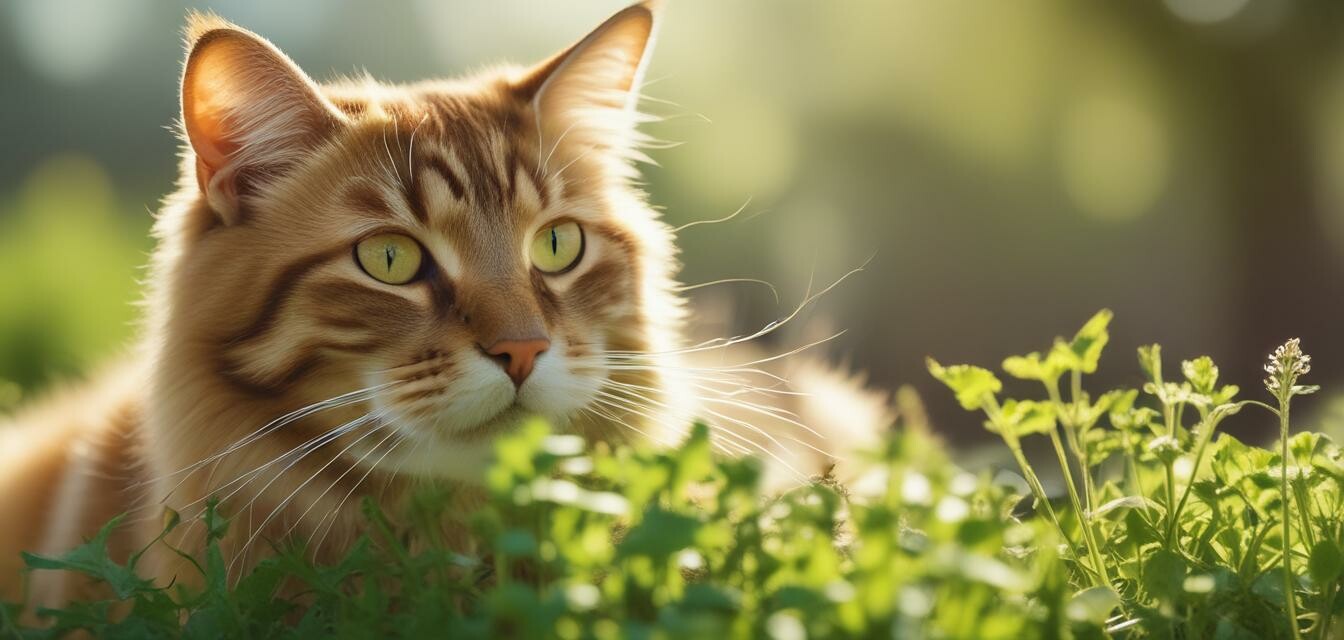
The Science Behind Catnip: What You Need to Know
Key Takeaways
- Catnip contains the active compound nepetalactone, which stimulates playful behaviors in cats.
- Humans can also enjoy calming effects from catnip, often brewed as tea.
- Catnip is a safe and natural method to redirect a cat's behavior and promote relaxation.
- Understanding its effects can enhance the well-being of your feline friend.
- There are simple ways to incorporate catnip into your cat's playtime and routine.
Understanding catnip is essential for any cat owner. The phenomenon of cats reacting to catnip is fascinating, and many pet owners often see their cats become euphoric, playful, and even somewhat silly. But what is the science behind this enchanting herb? In this article, we will explore the effects of catnip on cats, how you can use it safely, and why it might also be beneficial for humans.
What is Catnip?
Catnip, known scientifically as *Nepeta cataria*, is a herb in the mint family, renowned for its strong aroma that captivates many cats. The key component that affects cats is nepetalactone, found in the leaves and stems. This compound triggers a chemical response in cats that purports joy and excitement.
How Does Catnip Affect Cats?
The effects of catnip can vary widely among cats. While about 50% to 75% of cats will respond positively to catnip, the remaining percentage may have no noticeable reaction. The most common reactions to catnip include:
- Rolling and rubbing against the catnip
- Vocalizations or increased playfulness
- Excessive licking and chewing of the catnip
- Episodes of hyperactivity, followed by relaxation
Understanding the Responses
The response to catnip typically lasts about 10 to 15 minutes, after which cats will become temporarily immune to its effects. The cycle then resets, allowing them to experience catnip's effects again after a period of about 1 to 2 hours.
How to Safely Use Catnip
To ensure you are using catnip safely for your furry friend, consider the following:
- Always observe your cat’s reactions to catnip.
- Introduce catnip in small amounts and watch for any adverse reactions.
- Limit usage to a few times a week to prevent overstimulation.
Incorporating Catnip into Your Cat's Playtime
There are several entertaining ways to incorporate catnip into your cat's playtime:
- Sprinkle some loose catnip on their favorite toys.
- Use catnip-infused scratchers to promote positive scratching behavior.
- Mix dried catnip into cozy cat beds or blankets for relaxation. Explore WufWuf MyMeow 100% Natural Catnip for optimal fun.
- Create catnip sachets to fill their play areas with an enticing aroma.
WufWuf MyMeow 100% Natural Catnip for Cats, 20g
Sustainably grown in North America, this premium catnip enhances toys and scratchers, keeping your cat happy and relaxed.
Learn MoreBenefits of Catnip for Humans
Interestingly, catnip isn't just for our feline companions. It has been used for centuries in traditional herbal remedies for its calming properties in humans as well. Here are some potential benefits:
- Serves as a mild sedative, helping to calm anxiety and promote sleep.
- May provide relief from digestive issues when consumed as tea.
- Possesses anti-inflammatory properties which may reduce mild aches and pains.
How to Brew Catnip Tea
Brewing catnip tea is relatively simple. Here’s a quick guide:
- Boil water in a pot.
- Add 1 to 2 teaspoons of dried catnip leaves and let it steep for 10 minutes.
- Strain the mixture, and it’s ready to serve. You can enjoy it hot or cold!
Precautions When Using Catnip
While catnip is generally safe, it's essential to keep the following in mind:
- Start with small amounts, especially if you're trying it for the first time.
- Should be limited during pregnancy, as it may have effects on the uterus.
- Consult a healthcare professional if you have existing health conditions or are on medication.
Conclusion
Understanding catnip empowers cat owners to enhance their pets' playtime while also reaping benefits for themselves. By using this simple yet magical herb, you can create a stimulating environment for your cat and enjoy some calming moments for yourself. Don’t forget to explore additional resources like cat nutrition and cat behavior and training to further enhance your cat’s well-being.
Tips for Beginners
- Always keep your catnip stored in a cool, dry place to preserve its potency.
- Use it sparingly to avoid overexcitement in your cat.
- Observe your cat’s preferences—some may prefer fresh catnip, while others like dried.
- Incorporate catnip into your cat’s toys regularly for added excitement.
- Teach your cat to associate catnip with positive experiences like playtime.



